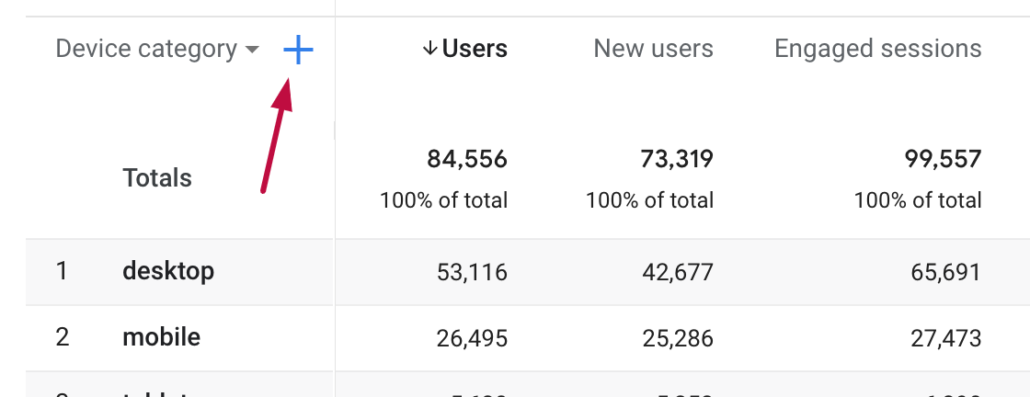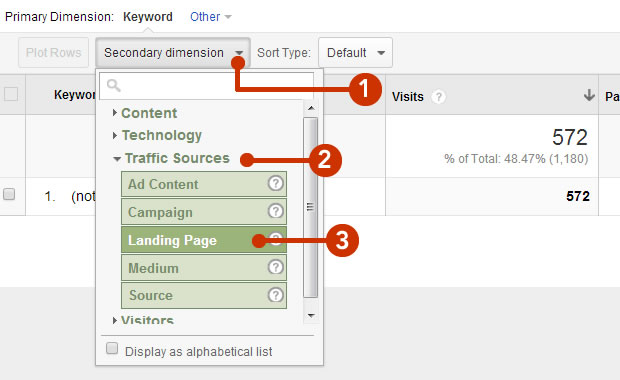How to Make Use Of Secondary Dimension in Google Analytics for Deeper Insights
How to Make Use Of Secondary Dimension in Google Analytics for Deeper Insights
Blog Article
Gain Comprehensive Point Of Views With Secondary Measurement in Google Analytics
Secondary dimensions in Google Analytics act as an effective tool for boosting the depth of understandings stemmed from data analysis. By including secondary dimensions right into your reports, you open up a globe of possibilities for revealing detailed partnerships and nuanced patterns within your site's performance metrics. This additional layer of information can illuminate surprise fads and supply a more granular understanding of customer behavior. With the ability to segment and compare data across multiple measurements, the potential for gaining actionable insights is large. Remain tuned to uncover how additional measurements can transform your information evaluation and drive educated decision-making in the electronic world.
Understanding Secondary Dimensions in GA
The principle of second dimensions in Google Analytics improves information analysis by offering additional understandings right into main metrics. Secondary dimensions permit users to delve deeper right into their data by including an added layer of info to the primary information being assessed. By including additional measurements, individuals can sector and contrast data throughout different measurements, such as web traffic sources, customer gadgets, geographic areas, and a lot more. This extra level of granularity makes it possible for an extra comprehensive understanding of user actions and internet site efficiency.
Understanding exactly how to properly make use of additional dimensions in Google Analytics is necessary for removing important understandings from the information accumulated. By choosing the proper secondary dimensions to enhance main metrics, individuals can discover patterns, patterns, and relationships that may have or else gone unnoticed. This much deeper degree of evaluation can result in even more enlightened decision-making and the optimization of digital advertising strategies to improve general performance.
Benefits of Making Use Of Secondary Measurements
Discovering the advantages intrinsic in leveraging secondary dimensions within Google Analytics brightens the deepness of insights available for boosting data analysis. By including additional dimensions, users can acquire a more comprehensive understanding of their key information metrics.
Additionally, additional dimensions enable customers to contrast and contrast various data points within the same record, giving an extra all natural view of web site efficiency. This relative analysis can clarify the performance of advertising and marketing projects, material engagement, or user demographics. Furthermore, using second measurements can assist in recognizing outliers or anomalies that may call for more examination.
Basically, leveraging secondary dimensions in Google Analytics provides a powerful device for removing valuable understandings and maximizing data-driven decision-making procedures.
Executing Second Dimensions Properly
To efficiently implement second dimensions in Google Analytics, planning the selection and application of these added data layers is paramount for maximizing the deepness of insights stemmed from analytics reports. When picking second dimensions, think about the details goals of your analysis to make sure the picked dimensions line up with the info required to respond to relevant questions. It's essential to focus on relevance over quantity, choosing dimensions that match the main measurement and supply significant context.
Additionally, recognizing the partnership in between the primary and secondary measurements is important. This understanding enables you to interpret the data accurately and draw actionable conclusions. Executing additional measurements effectively involves utilizing them to uncover patterns, patterns, and connections that may not be have a peek at these guys obvious when evaluating information exclusively based upon the primary measurement. By integrating additional measurements attentively, you can boost the granularity of your analysis and gain deeper understandings into individual habits, material performance, and various other crucial metrics within Google Analytics.
Studying Information With Secondary Dimensions
Utilizing second measurements in information analysis provides a nuanced point of view that reveals complex connections and patterns within Google Analytics records. By integrating second measurements alongside key dimensions, analysts can dig much deeper into the information to extract useful insights. When evaluating information entirely based on key measurements., this technique makes it possible for the recognition of connections that may not be quickly obvious.
When examining information with secondary dimensions in Google Analytics, it is important to think about the specific metrics or dimensions that Read More Here will certainly provide the most meaningful context for the main dimension being examined. Coupling the key dimension of 'traffic source' with second measurements such as 'tool group' or 'touchdown web page' can use an extra thorough understanding of customer behavior and preferences.
Moreover, the capacity to segment data using second dimensions enables a much more granular assessment of individual communications, helping in the optimization of marketing strategies, website efficiency, and total customer experience. By leveraging second measurements successfully, services can make informed decisions based on a thorough analysis of their Google Analytics information.
Finest Practices for Secondary Dimensions
When carrying out second measurements in Google Analytics, accuracy in choosing appropriate metrics is critical for obtaining workable insights from the data analysis process. One of the most effective techniques for using secondary dimensions successfully is to align them with your click this site main dimension to acquire a more thorough understanding of your web site or campaign efficiency. For example, if your primary measurement is 'Source/Medium,' matching it with second measurements like 'Device Category' or 'Touchdown Page' can provide understandings right into how different devices or touchdown web pages influence website traffic from various sources.

Routinely experimenting with various mixes of primary and additional measurements can aid you find new connections and fads within your information, enabling you to optimize your methods and enhance total efficiency (Secondary Dimension in Google Analytics). By adhering to these ideal practices, you can leverage additional measurements in Google Analytics effectively to get much deeper insights and make data-driven decisions that favorably impact your organization

Verdict
Finally, second dimensions in Google Analytics supply a beneficial chance to obtain deeper understandings right into primary information metrics. By including a secondary measurement to reports, services can reveal connections, fads, and patterns that may not be right away apparent, bring about an extra extensive understanding of individual actions and interactions on a site. Implementing second measurements successfully and evaluating data with them can help businesses make data-driven decisions and optimize their on the internet efficiency.
By incorporating additional measurements, users can section and contrast data throughout different dimensions, such as website traffic sources, customer tools, geographical places, and a lot more. Carrying out additional dimensions efficiently includes utilizing them to discover patterns, fads, and correlations that might not be evident when assessing data solely based on the main dimension. By integrating additional dimensions alongside key dimensions, analysts can dig deeper right into the data to extract beneficial understandings. One of the finest practices for making use of additional dimensions effectively is to straighten them with your main measurement to obtain a much more detailed understanding of your web site or campaign performance. If your key measurement is 'Source/Medium,' coupling it with additional dimensions like 'Gadget Group' or 'Landing Page' can offer insights into just how various gadgets or landing web pages effect web traffic from different sources.
Report this page